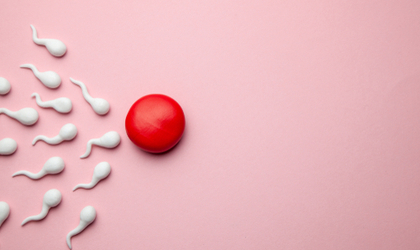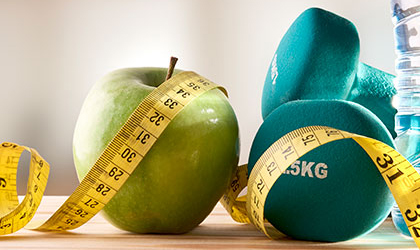
Ever noticed how, at certain points in the month, you can tick everything off your to-do list without breaking a sweat and still have energy after a dynamic HIIT class? And, on other days, you start tearing up for no particular reason and only want to surface from your duvet den for sweet treats and Netflix? No, you’re not ‘crazy’. And you’re certainly not alone. There’s a perfectly simple explanation for this. As a woman, you have hormonal ‘seasons’, which are characterised by changes in the way you look, think, and feel.
Mapping your menstrual cycle like the seasons in a year – winter (menstruation), spring (follicular phase), summer (ovulatory phase), and autumn (luteal phase) – can be incredibly empowering. It can help you understand the subtle (or not so subtle!) shifts in your mood and energy levels, and tune into requests from your body. Getting to know your cycle better means getting to know yourself better. And there’s a great deal of power in that.
However, before we delve into the metaphorical seasons, it’s worth mentioning that every woman’s cycle is unique. Even though this framework is relatively accurate, you may find yourself having a longer and shorter cycle, or spending more time in certain seasons than others throughout the month – and that’s completely normal and natural.
Winter marks the start of your menstrual cycle (menstruation: around days 1-5)
Winter marks the first day of your menstrual bleed. Progesterone and oestrogen – your reproductive hormones – are at their lowest, leading to menstrual fatigue and a general feeling of ‘meh’.
Try this
Hibernation season calls for early nights, gentle exercise (hello, restorative yoga), and a totally free social calendar. The overarching message is to look after yourself: cancel all plans; build a nest, rest, and preserve your energy levels – just as animals would during winter.
Eat this
Menstruation is an energy-intense process. At this stage of your cycle, your body needs a good mix of lean proteins, complex carbohydrates, and healthy fats. In the same breath, try to avoid processed treats, sugar, alcohol, and caffeine as they can aggravate menstruation symptoms.
You may notice yourself craving certain foods more right now – and that’s okay. Try to make healthy choices for the most part, but allow yourself to indulge in the occasional treat (everything in moderation, right?). If you fancy something sweet, perhaps you could try a peanut butter-stuffed Medjool date with a square of dark chocolate, or a cacao, banana, and almond butter smoothie?
Now’s the perfect time to focus on your iron intake to account for the iron lost in blood. Without enough iron, you’ll feel tired, lethargic, and foggy. Dark green leafy vegetables, beans, lentils, and dried prunes are excellent iron-rich, plant-based options. If you eat animal products, grass-fed meat, oily fish, and eggs can help replenish lost iron during your bleed, so be sure to bundle more into your diet.
Don’t forget vitamin C, either. Vitamin C increases iron absorption, making it a helpful addition during your Inner Winter season. Add foods like green and red peppers, broccoli, mango, pineapple, and strawberries.
Aside from iron and vitamin C, you may also want to make magnesium and the B vitamins mainstays of your menstruation arsenal. These guys are known to support some of the physical and emotional changes that happen during your monthly bleed. You can find magnesium in dark chocolate, avocados, nuts, tofu, and whole grains, and the B vitamins in leafy green veggies, oily fish, and eggs.
Time for a menstrual cycle spring clean (pre-ovulation / follicular phase: around days 6-11)
Finally, you can emerge from your winter cave with extra buoyancy and lightness in your step. And, as in spring, when the flowers start to bud, oestrogen rises in the lead up to ovulation. You may notice that the world looks brighter; you feel more energetic and full of hope. Ah, life feels good again.
Try this
Catch up with friends, brainstorm creative ideas, and plan new projects. Schedule some light exercise if you feel up to it.
Eat this
During this season, you may want to include more dietary sources that help metabolise oestrogen, such as beans, eggs, grass-fed meat, oily fish, and fermented foods, like kimchi. It also doesn’t hurt to stay on top of your iron and vitamin C intake to replenish your levels that may have been depleted during your monthly bleed.
Summer of menstrual cycle fun (ovulation: around days 12-19)
Summer welcomes ovulation. Say hello to your sunnier, sprightlier self. This season sees oestrogen peaking as you ovulate, so you’ll be looking and feeling your best (enter, glowing skin, high libido, and abounding confidence).
Try this
Now is the time to capitalise on your buzzing energy, increased motivation, and effervescent mood: schedule an intense workout session, work presentation, networking, or big social event. You may also want to make the most of your high libido and plan some romantic dates.
Eat this
The peak in oestrogen can make you feel on top of the world – there’s no denying that. But you can indeed have too much of a good thing. Excess oestrogen can negatively impact your cycle, leading to uncomfortable PMS symptoms, like menstrual cramps, breast tenderness, and pesky spots, as you move into your Inner Autumn season. To buffer against this, try to include more sources of fibre to remove excess oestrogen. Think all things plant-related: fruits, veggies, legumes, pulses, nuts, seeds, and fresh herbs.
Of course, let’s not forget this is the most fertile time of your cycle. And so, if you’re looking to encourage pregnancy, bundle more folate into your diet. Folate is involved in fertility and prenatal health. Adding more dark green veggies, peas, and kidney beans could certainly help.
Fall into autumn with your menstrual cycle (pre-menstruation: around days 20-28)
Your hormonal leaves are starting to turn. Autumn sees oestrogen drop and progesterone rise. The PMS symptoms kick in. Anxiety. Low mood. Crying spells. Appetite changes. Even body image concerns.
Try this
More than ever, be kind and gentle with yourself. Autumn is known for its unpredictable weather, so remind yourself the mood swings are justified. Remember, no one season lasts forever. You’ll get through this period. We promise.
Eat this
Before hibernation, animals increase their food intake. And you should feel inspired to do the same. Choose healthy, nourishing, whole-food options to sustain your energy levels. It’s also an idea to cut back on caffeine and alcohol around this time since they can exacerbate PMS symptoms.
If you’re prone to food cravings before your period, you’re certainly not alone. You may wish to add more sources of chromium to your diet, as it contributes to the maintenance of normal blood glucose levels. You can find chromium in Brazil nuts, shellfish, and broccoli.
Frustratingly, you may also notice that your sleep becomes a little erratic at this time. Valerian is traditionally used for the relief of sleep disturbances and mild anxiety, so may be helpful during this season. Including more dietary sources of magnesium may further support your mood and sleep, since it contributes to normal psychological function. Go for dark chocolate, pumpkin seeds, and quinoa.
Once you understand the seasons of your menstrual cycle, leaning into them can be tremendously powerful. If you want to learn more about supporting your health as a woman, feel free to reach out to one of our expert Nutrition Advisors. You can contact them here.
Related Posts
Disclaimer: The information presented by Nature's Best is for informational purposes only. It is based on scientific studies (human, animal, or in vitro), clinical experience, or traditional usage as cited in each article. The results reported may not necessarily occur in all individuals. Self-treatment is not recommended for life-threatening conditions that require medical treatment under a doctor's care. For many of the conditions discussed, treatment with prescription or over the counter medication is also available. Consult your doctor, practitioner, and/or pharmacist for any health problem and before using any supplements or before making any changes in prescribed medications.

Olivia
Olivia Salter has always been an avid health nut. After graduating from the University of Bristol, she began working for a nutritional consultancy where she discovered her passion for all things wellness-related. There, she executed much of the company’s content marketing strategy and found her niche in health writing, publishing articles in Women’s Health, Mind Body Green, Thrive and Psychologies.
View More



